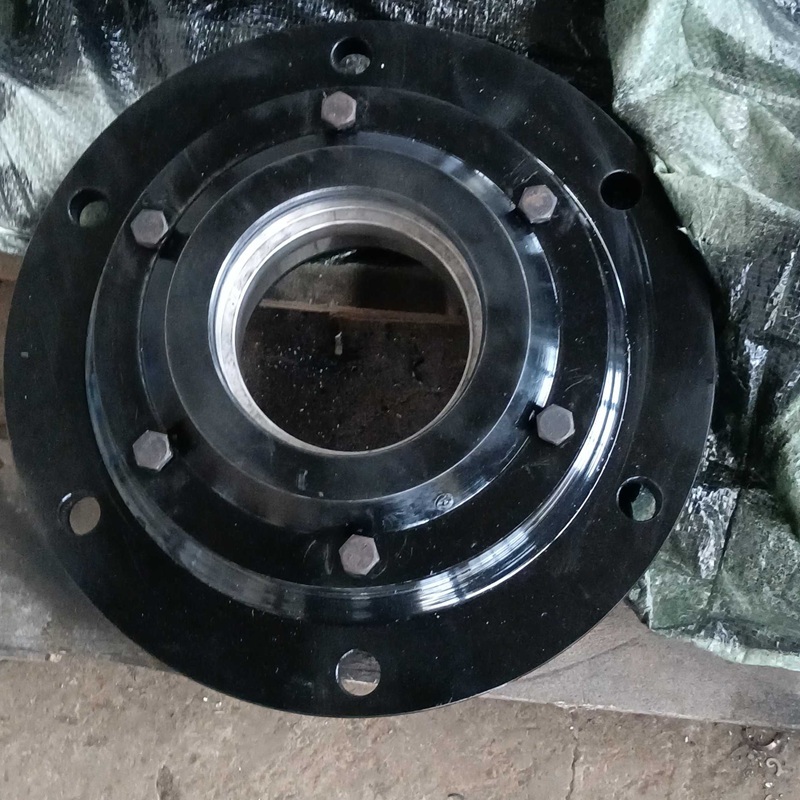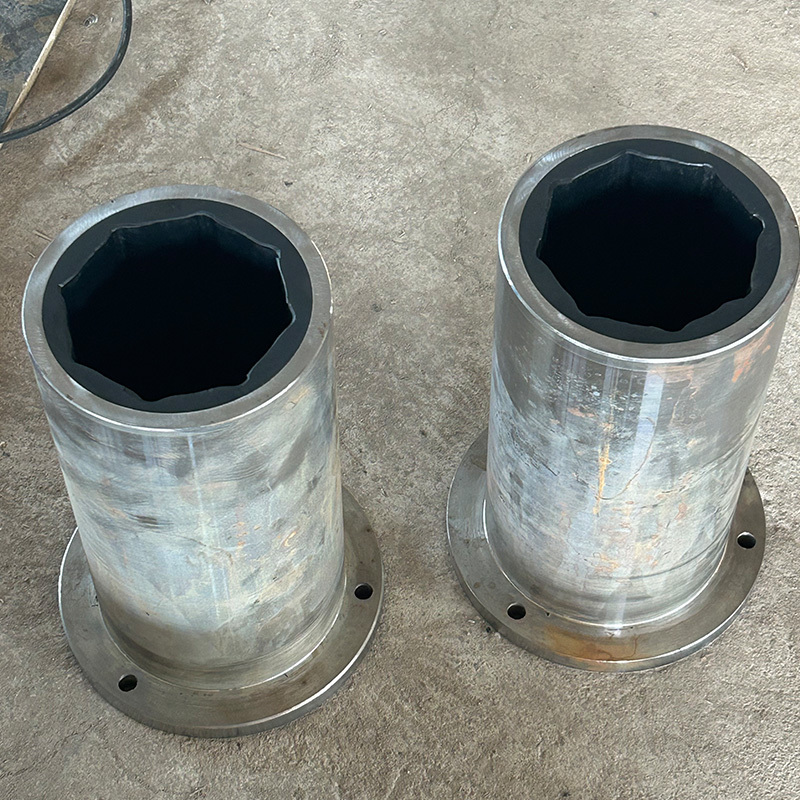Troubleshooting Common Issues with Rudder Bearings: A Comprehensive Guide
Release Time:
May 03,2025
Troubleshooting Common Issues with Rudder Bearings: A Comprehensive Guide Rudder bearings play a crucial role in the steering mechanism of maritime vessels, providing stability and control. Understanding how to troubleshoot common issues with these components is vital for maintaining your vessel's performance and ensuring safety at sea. In this guide, we will explore the typical problems associate
Troubleshooting Common Issues with Rudder Bearings: A Comprehensive Guide
Rudder bearings play a crucial role in the steering mechanism of maritime vessels, providing stability and control. Understanding how to troubleshoot common issues with these components is vital for maintaining your vessel's performance and ensuring safety at sea. In this guide, we will explore the typical problems associated with rudder bearings, their causes, and effective solutions. This comprehensive approach will not only help you resolve existing issues but also equip you with the knowledge to prevent future complications.
Table of Contents
- Understanding Rudder Bearings
- Common Issues with Rudder Bearings
- Causes of Rudder Bearing Issues
- Diagnosing Rudder Bearing Problems
- Fixing Rudder Bearing Issues
- Preventive Maintenance for Rudder Bearings
- When to Consult a Professional
- Frequently Asked Questions
- Conclusion
Understanding Rudder Bearings
Rudder bearings are essential components in the steering systems of boats and ships, enabling smooth movement and precise control over direction. Typically made from materials such as bronze, nylon, or composite plastics, these bearings provide support for the rudder shaft while allowing for rotation. A well-functioning rudder bearing ensures that the vessel can maneuver effectively in various sea conditions.
The Role of Rudder Bearings in Vessel Performance
Rudder bearings are not just passive components; they actively contribute to the overall performance of the vessel. Properly functioning rudder bearings ensure minimal friction, which translates to smoother steering and increased responsiveness. When issues arise within these components, they can lead to compromised handling and safety challenges.
Common Issues with Rudder Bearings
Several issues can affect the performance and functionality of rudder bearings. Recognizing these problems early can save time and money in repairs. Below are some of the most common issues experienced by vessel operators and how they manifest.
1. Excessive Wear and Tear
Rudder bearings are subjected to continuous stress and movement, which can lead to excessive wear over time. This wear may result in increased friction, making it difficult to steer the vessel effectively.
2. Corrosion
Corrosion is a significant concern, especially in saltwater environments. Metal bearings are particularly susceptible to rust and degradation, which can compromise their structural integrity and performance.
3. Misalignment
Improper installation or damage can lead to misalignment of the rudder shaft and bearings. This misalignment can result in uneven load distribution and increased stress on the bearings, leading to premature failure.
4. Seizing or Binding
Seizing occurs when the rudder bearings become overly stiff or completely immobile. This issue can arise from insufficient lubrication or significant wear and can lead to steering difficulties.
5. Leaking Lubrication
Lubrication is crucial for maintaining the function of rudder bearings. A leak can result in inadequate lubrication, leading to increased friction and wear and causing the bearings to malfunction.
Causes of Rudder Bearing Issues
Understanding the causes of rudder bearing issues is essential for effective troubleshooting and prevention. Here are some common culprits:
1. Environmental Factors
Exposure to harsh marine conditions, including saltwater and extreme temperatures, can accelerate wear and corrosion of rudder bearings. The environment plays a critical role in the longevity of these components.
2. Lack of Maintenance
Neglecting regular maintenance can lead to a host of problems with rudder bearings. Routine inspections, lubrication, and adjustments are necessary to ensure optimal performance.
3. Design Flaws
In some cases, rudder bearings may suffer from design flaws that affect their performance. Poorly designed bearings may not withstand the stresses of operation, leading to premature failure.
4. Improper Installation
Installation errors can contribute to premature wear and misalignment. Ensuring that rudder bearings are installed correctly is critical for their function and longevity.
Diagnosing Rudder Bearing Problems
Effective diagnosis of rudder bearing issues involves a systematic approach. Below are the key steps to identify problems accurately:
1. Visual Inspection
Start with a thorough visual inspection of the rudder bearings and associated components. Look for signs of corrosion, excessive wear, or misalignment. Check for any visible leaks or damage.
2. Check for Play
Examine the rudder for any play or excessive movement. A loose rudder may indicate worn bearings and requires immediate attention to avoid further damage.
3. Monitor Steering Performance
Pay close attention to how the vessel handles while steering. Any unusual stiffness, binding, or noise when turning the rudder should prompt further investigation.
4. Lubrication Check
Ensure that the rudder bearings are properly lubricated. Inspect for any signs of leaks and replenish lubrication as necessary while adhering to manufacturer guidelines.
5. Use Diagnostic Tools
Consider using diagnostic tools, such as a shaft alignment tool, to assess the alignment of the rudder shaft and bearings accurately. Proper tools can provide objective data on the condition of the components.
Fixing Rudder Bearing Issues
Once the problems have been diagnosed, it’s essential to implement the appropriate fixes. Here are some effective solutions:
1. Replace Worn Bearings
If wear is significant, replacing the rudder bearings may be necessary. Ensure you select bearings that meet or exceed manufacturer specifications for optimal performance.
2. Address Corrosion
For corroded bearings, remove any rust or corrosion using appropriate cleaning agents. If the damage is severe, replacement is often the best option to ensure safety and performance.
3. Realign Components
Misalignment can often be corrected by adjusting the rudder shaft and bearings. Consult with a professional if realignment is beyond your capabilities.
4. Improve Lubrication System
Ensure that the lubrication system is functioning correctly and that the bearings receive adequate lubrication. Consider upgrading to a more efficient lubrication system if necessary.
5. Regular Maintenance Schedule
Implement a comprehensive maintenance schedule that includes regular inspections, lubrication, and proactive measures to prevent future issues. Consistent maintenance is key to extending the life of your rudder bearings.
Preventive Maintenance for Rudder Bearings
Preventive maintenance is crucial for ensuring the longevity and reliability of rudder bearings. Here are some best practices to follow:
1. Regular Inspections
Conduct routine inspections of the rudder bearings and related systems every few months or as recommended by the manufacturer. Early detection of issues can save on costly repairs.
2. Lubrication Management
Establish a lubrication schedule based on the manufacturer’s recommendations and the operating conditions. Proper lubrication reduces friction and wear significantly.
3. Environmental Protection
Where possible, protect rudder bearings from harsh environmental conditions by employing protective coatings or using bearings made from corrosion-resistant materials.
4. Training and Awareness
Ensure that personnel are trained in rudder bearing maintenance and troubleshooting. Knowledgeable crew members can identify problems before they escalate.
5. Record Keeping
Maintain a detailed log of inspections, maintenance, and repairs performed on your rudder bearings. This documentation can help track performance trends and inform future maintenance strategies.
When to Consult a Professional
While many rudder bearing issues can be addressed through DIY approaches, certain situations warrant consultation with a professional. Consider seeking expert help if:
1. Extensive Damage is Present
If there is significant damage or wear, a professional can assess the situation and recommend the most effective course of action, including repairs or replacements.
2. Misalignment Issues Persist
Should misalignment be beyond your ability to correct, a professional can use advanced tools and techniques to realign the rudder shaft and bearings accurately.
3. Corrosion is Severe
For severe corrosion, especially if it affects the structural integrity of components, professional intervention is necessary to ensure safety and prevent catastrophic failure.
4. You Lack Expertise
If you are unsure about diagnosing or repairing rudder bearings, it is always prudent to consult with a marine engineer or technician with experience in maritime systems.
Frequently Asked Questions
1. How often should rudder bearings be inspected?
Rudder bearings should ideally be inspected every six months, or more frequently if the vessel operates in harsh conditions.
2. What are the signs of a failing rudder bearing?
Signs include unusual steering resistance, excessive play in the rudder, noise during operation, and visible wear or corrosion on the bearings.
3. Can I replace rudder bearings myself?
While experienced individuals may replace rudder bearings, it is recommended to consult a professional if you lack the necessary tools or experience.
4. What materials are best for rudder bearings?
Bronze, nylon, and composite materials are popular choices due to their resistance to corrosion and wear. The best material depends on the vessel's operating conditions.
5. How can I prevent corrosion in rudder bearings?
Regular maintenance, using corrosion-resistant materials, and applying protective coatings can significantly reduce the risk of corrosion in rudder bearings.
Conclusion
Understanding and troubleshooting common issues with rudder bearings is essential for vessel performance and safety. By recognizing the signs of wear, properly diagnosing problems, and implementing a robust maintenance regimen, vessel operators can enhance the longevity and reliability of their steering systems. Whether through DIY approaches or consulting with professionals, taking proactive measures will ensure that rudder bearings continue to function optimally, allowing for smooth and safe navigation in any maritime environment.
Keywords:
More information




